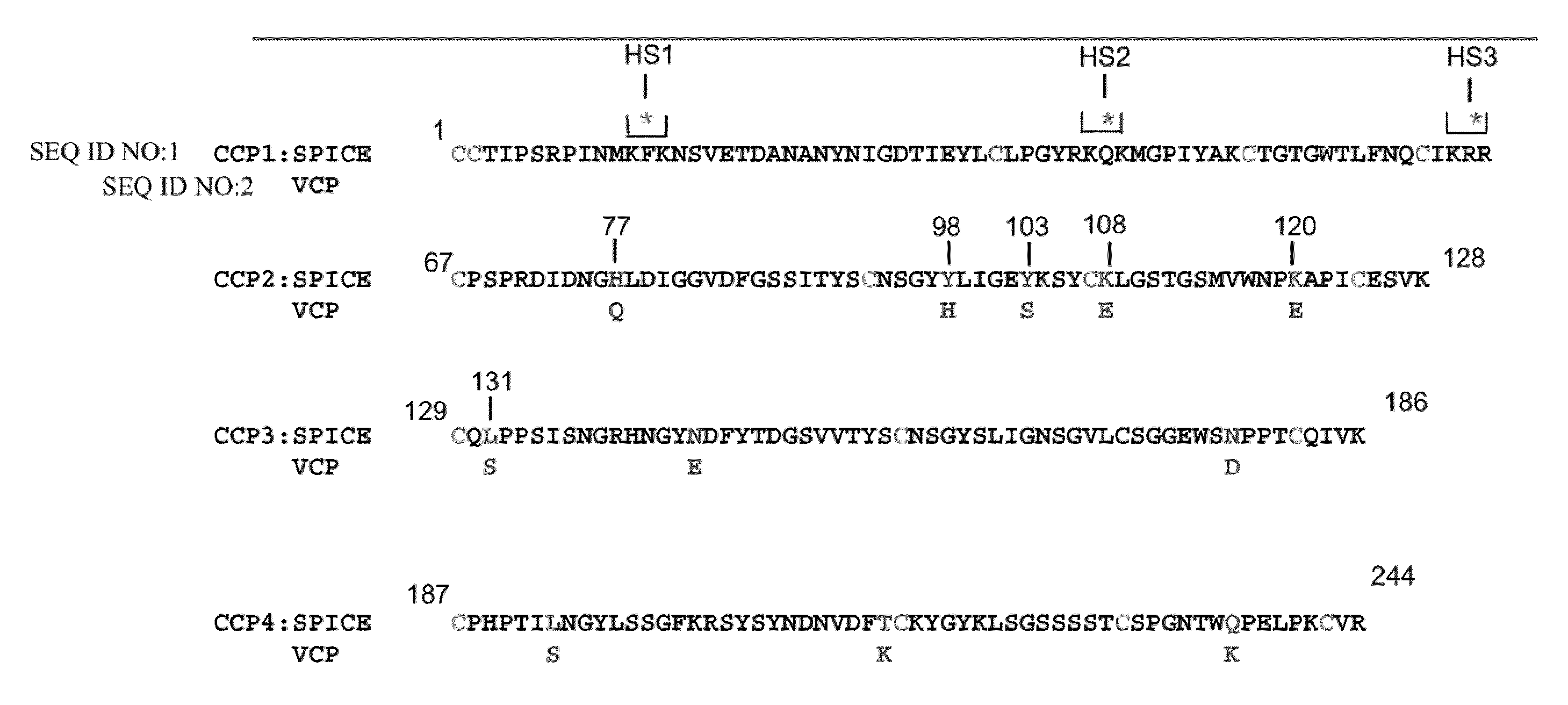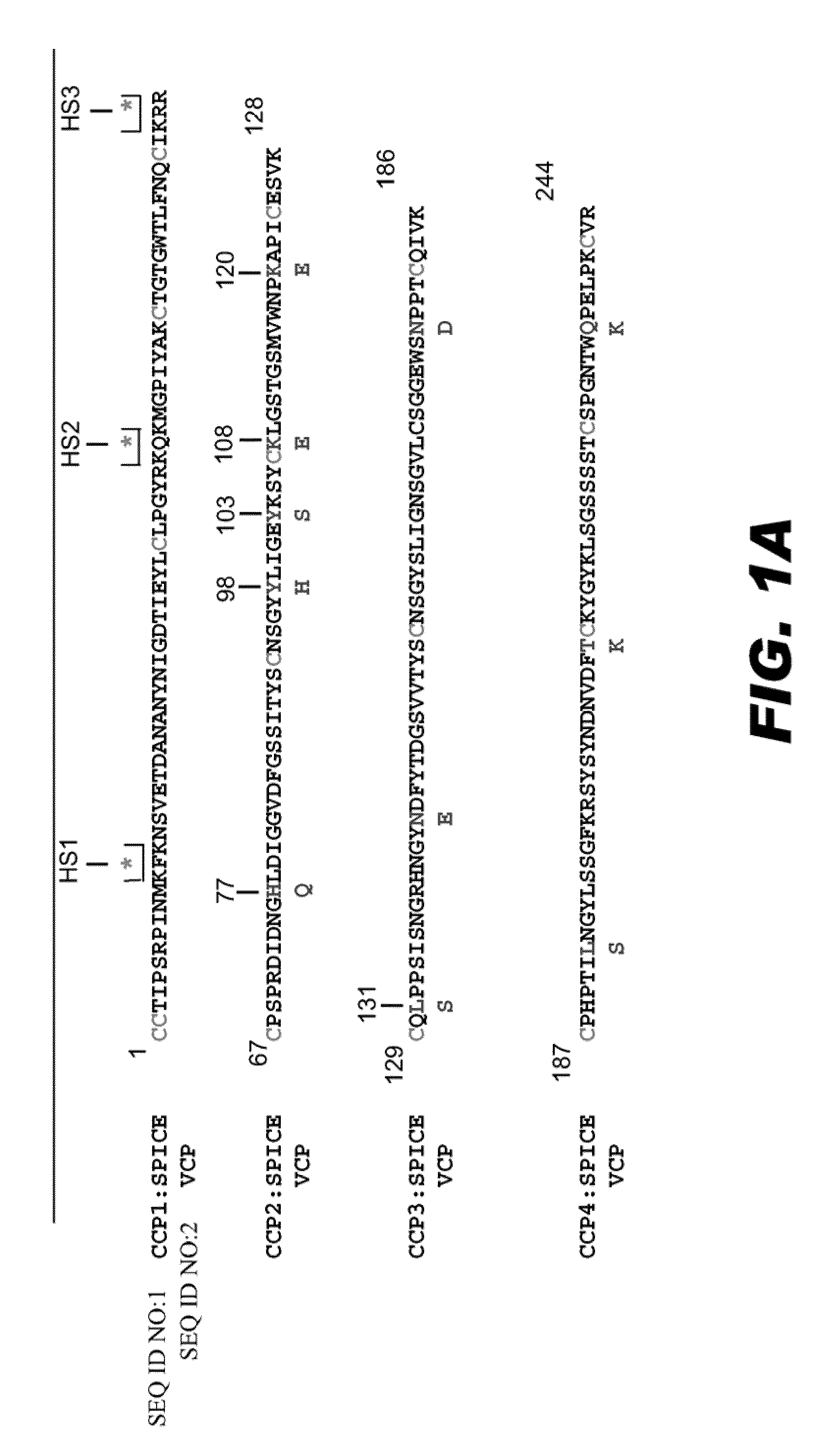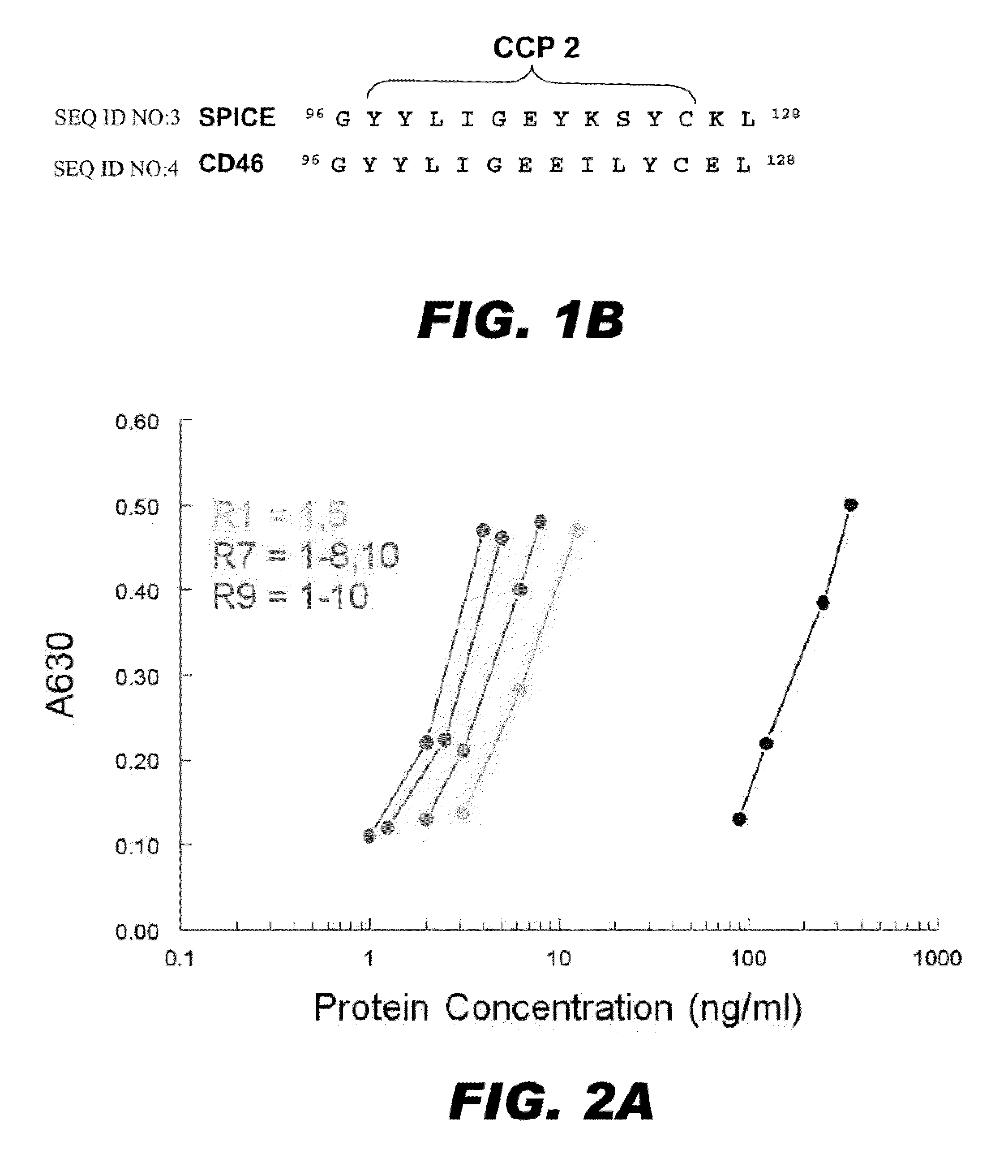Compositions and methods for the detection and treatment of poxviral infections
a technology of poxvirus and composition, applied in the field of composition and methods for the detection and treatment of poxvirus infections, can solve the problems that the inability to develop convenient means of inhibiting pices has not yet been realized, and achieve the effect of inhibiting the activity
- Summary
- Abstract
- Description
- Claims
- Application Information
AI Technical Summary
Benefits of technology
Problems solved by technology
Method used
Image
Examples
example 1
Two SPICE Amino Acids Substituted in VCP Enhance Regulation of Human Complement
[0083]In the process of creating SPICE from VCP, three chimeric constructs were evaluated (Table 1) and transiently expressed in Chinese hamster ovary (CHO) cells. Supernatants from these transfectants were concentrated, quantitated (via ELISA), Western blotted and assessed for their ability to regulate activation of human complement. Each of these mutants were expressed and had the expected Mr (see below).
[0084]Ligand Binding (C3b). An ELISA was used to profile C3b binding (FIG. 2A). SPICE bound C3b ˜80-fold times more efficiently than VCP. Additionally, mutant R1, which substitutes only two of the SPICE amino acids into VCP (H77 and K120), enhanced C3b-binding capability of VCP by ˜30-fold. This finding is consistent with a previous report that single amino acids substitutions of these residues (VCP-E120K or VCP-Q77H) augmented complement regulatory activity (Sfyroera, G. et al (2005) J. Immunol 174:214...
example 2
Electrophoretic Mobility of VCP and SPICE is Influenced by Residue 131
[0088]Although VCP and SPICE each contain 244 residues with a similar mass (VCP mol wt 26,745; SPICE mol wt 26,863), SPICE migrates with a faster Mr on gels (nonreducing SDS-PAGE). Both the monomers and dimers show this pattern (Liszewski, M. K. et al (2006) J. Immunol 176:3725). It was noted that SPICE-VCP chimeras lacking L131 migrated with an Mr similar to VCP, while others containing L131 migrated with an Mr similar to SPICE (R5, R6, R7, and R9). Consequently, we substituted the L131 residue of SPICE to the homologous VCP residue S131 (i.e., SPICE mutant L131S) and transiently expressed this protein in these CHO cells. Western blot analysis of the transfectant media revealed that monomeric and dimeric SPICE-L131S migrate with a Mr similar to VCP and not SPICE (FIG. 3A). Thus, L131S is responsible for the majority of Mr difference between the two proteins.
example 3
Validation of Heparin Binding Sites
[0090]To examine the influence of three putative heparin binding sites in poxviruses, three proposed heparin binding sites of SPICE were individually mutated to create heparin mutants HS1, HS2, and HS3 (FIG. 1). These were transiently expressed in CHO cells, and the supernatants were chromatographed over a heparin column. Following elution under increasing salt concentrations, fractions were monitored via Western blotting using a cross-reacting anti-VCP Ab. As summarized in Table 3, mutation of each of the individual sites diminished the ability of the protein to bind to heparin as compared to wild type. However, mutation of the second site decreased its ability to bind to heparin to a greater extent than HS1 and HS3. The peak elutions of the mutants are summarized in Table 3. All eluted at a lower ionic strength than wild type SPICE. Thus, each of these three sites contributes to the ability of SPICE (and likely other PICES) to bind heparin, yet H...
PUM
| Property | Measurement | Unit |
|---|---|---|
| concentrations | aaaaa | aaaaa |
| volume | aaaaa | aaaaa |
| volume | aaaaa | aaaaa |
Abstract
Description
Claims
Application Information
 Login to View More
Login to View More - R&D
- Intellectual Property
- Life Sciences
- Materials
- Tech Scout
- Unparalleled Data Quality
- Higher Quality Content
- 60% Fewer Hallucinations
Browse by: Latest US Patents, China's latest patents, Technical Efficacy Thesaurus, Application Domain, Technology Topic, Popular Technical Reports.
© 2025 PatSnap. All rights reserved.Legal|Privacy policy|Modern Slavery Act Transparency Statement|Sitemap|About US| Contact US: help@patsnap.com



